If you're one of the millions who suffer from severe headaches or migraines, relief might be closer than you think - and it could be hiding in your pantry. Recent research has uncovered a surprising connection between dietary fiber intake and the prevalence of these debilitating headaches. This article explores the groundbreaking findings that suggest increasing your fiber consumption could be a simple yet effective strategy in managing and potentially preventing migraines.
Key Takeaways:
- A recent study found a significant link between higher fiber intake and lower rates of severe headaches or migraines.
- People consuming the most fiber (around 25-30 grams daily) were 30% less likely to experience severe headaches compared to those consuming the least.
- Fiber's anti-inflammatory properties and its role in gut health may contribute to its headache-fighting effects.
- Gradually increasing fiber intake through whole foods is recommended, aiming for 25-30 grams per day.
- Combining a high-fiber diet with other lifestyle changes could potentially offer significant relief for headache sufferers.
For those who've experienced the throbbing pain of a migraine or severe headache, the search for relief can seem endless. From medication to lifestyle changes, sufferers often try numerous approaches to find some respite. Now, a new study published in Frontiers in Nutrition offers a promising and surprisingly simple addition to the migraine-fighting arsenal: dietary fiber[4].
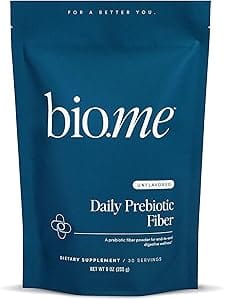
Daily Prebiotic Fiber
Fiber Supplement Powder for Digestive Health & Gut Health - Fiber Powder Unflavored Prebiotics, Non-GMO Dietary Fiber, Gluten & Sugar Free Soluble Fiber Supplements
The Fiber-Headache Connection
The groundbreaking research, conducted by a team of scientists, examined data from over 25,000 U.S. adults who participated in the National Health and Nutrition Examination Survey (NHANES)[4]. This comprehensive study aimed to investigate the relationship between dietary fiber intake and the prevalence of severe headaches or migraines - a connection that, surprisingly, had never been explored before[4].
The results were striking. Participants who consumed the highest amounts of fiber (around 25-30 grams daily) were 30% less likely to experience severe headaches compared to those with the lowest fiber intake[4]. This association remained significant even after accounting for various factors such as age, gender, and body mass index.
Why Fiber Might Help
While the exact mechanisms are still being studied, researchers have several theories about why fiber might be beneficial for headache sufferers:
- Anti-Inflammatory Properties: Dietary fiber has known anti-inflammatory effects[5]. Given that inflammation is often associated with migraines, this could explain part of fiber's protective role.
- Gut Health: Fiber plays a crucial role in maintaining a healthy gut microbiome[5]. An imbalanced gut has been linked to various health issues, including migraines. By promoting a diverse and healthy gut flora, fiber might indirectly help reduce headache frequency.
- Blood Sugar Regulation: Fiber helps stabilize blood sugar levels[7]. Rapid fluctuations in blood sugar have been associated with headaches in some individuals, so fiber's stabilizing effect could be beneficial.
- Improved Circulation: Some types of fiber have been shown to improve cardiovascular health[11]. Better circulation could potentially reduce the likelihood of certain types of headaches.
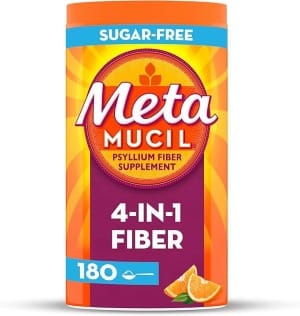
Metamucil 4 in 1 Daily Fiber
Supplement Powder, Fiber Powder for Digestive Health and Regularity*, Sugar-Free, Orange, Naturally Sourced Psyllium Fiber
Types of Fiber and Where to Find Them
Not all fiber is created equal, and for optimal health benefits, it's important to consume a variety of fiber types. There are two main categories:
- Soluble Fiber: This type dissolves in water and can help lower blood cholesterol and glucose levels. Good sources include:
- Oats and barley
- Fruits like apples, citrus fruits, and berries
- Legumes such as beans, lentils, and peas
- Vegetables like carrots and Brussels sprouts
- Insoluble Fiber: This type doesn't dissolve in water and helps food move through your digestive system. Sources include:
- Whole wheat and whole grains
- Nuts and seeds
- Vegetables such as cauliflower, green beans, and potatoes (with skin)
- Fruit skins
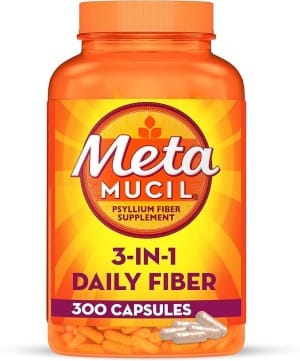
Metamucil 3-in-1 Fiber Capsules
Daily Psyllium Husk Fiber Supplement, Fiber Capsules for Digestive Health, Plant-Based Psyllium Husk Fiber Capsules, #1 Doctor Recommended Fiber Brand
How Much Fiber Do You Need?
The study found the most significant benefits in individuals consuming around 25-30 grams of fiber daily[4]. This aligns with general dietary recommendations, which suggest:
- Adult women: 25 grams per day
- Adult men: 38 grams per day
However, the average American consumes only about 15 grams of fiber daily, falling far short of these recommendations[6].
Tips for Increasing Your Fiber Intake
If you're looking to boost your fiber consumption to potentially ward off headaches, here are some practical tips:
- Start Slowly: A sudden increase in fiber can cause digestive discomfort. Gradually increase your intake over several weeks.
- Stay Hydrated: Fiber works best when accompanied by adequate water intake. Aim for at least 8 glasses of water daily.
- Choose Whole Foods: Opt for whole grains, fruits, vegetables, and legumes rather than processed foods with added fiber.
- Snack Smart: Replace low-fiber snacks with options like nuts, seeds, or fresh fruits.
- Add Fiber to Favorites: Sprinkle chia seeds or ground flaxseed on yogurt, cereal, or salads for an easy fiber boost.
Beyond Fiber: A Holistic Approach to Headache Management
While increasing fiber intake shows promise, it's important to remember that headache management often requires a multifaceted approach. Consider combining increased fiber consumption with other strategies:
- Regular Exercise: Physical activity can help reduce the frequency and intensity of migraines for some people.
- Stress Management: Techniques like meditation, deep breathing, or yoga can help manage stress-related headaches.
- Sleep Hygiene: Maintaining a consistent sleep schedule can help prevent headaches triggered by sleep disturbances.
- Hydration: Dehydration is a common headache trigger. Ensure you're drinking enough water throughout the day.
- Trigger Identification: Keep a headache diary to identify and avoid personal triggers, which might include certain foods, environmental factors, or activities.
Conclusion: A Fiber-Rich Future for Headache Sufferers?
The discovery of a potential link between dietary fiber and reduced headache prevalence opens up exciting possibilities for those seeking natural ways to manage their condition. While more research is needed to fully understand this connection, the overall health benefits of a high-fiber diet make it a worthwhile consideration for anyone looking to improve their well-being.
Remember, significant changes to your diet should always be discussed with a healthcare provider, especially if you have existing health conditions or are taking medications. They can provide personalized advice and help you safely incorporate more fiber into your diet.
As we continue to unravel the complex relationships between diet and health, the humble fiber stands out as a potential ally in the fight against migraines. By making simple, fiber-rich choices in our daily meals, we might not only be nourishing our bodies but also taking a step towards a life with fewer headaches.
Citations:
[1] https://pubmed.ncbi.nlm.nih.gov/36687687/
[3] https://www.mindbodygreen.com/articles/study-finds-inadequate-fiber-could-be-cause-of-your-migraines
[4] https://www.ncbi.nlm.nih.gov/pmc/articles/PMC7589116/
[5] https://www.betterhealth.vic.gov.au/health/healthyliving/fibre-in-food
[6] https://www.eatingwell.com/article/287742/10-amazing-health-benefits-of-eating-more-fiber/
[7] https://www.ncbi.nlm.nih.gov/pmc/articles/PMC9846638/
[8] https://headaches.org/increase-fiber-and-decrease-migraine/
[10] https://www.nih.gov/news-events/nih-research-matters/health-benefits-dietary-fibers-vary



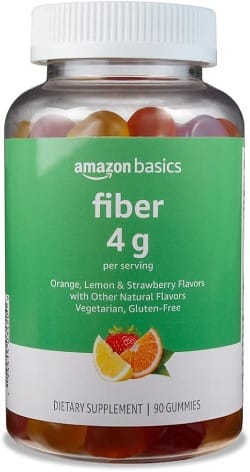







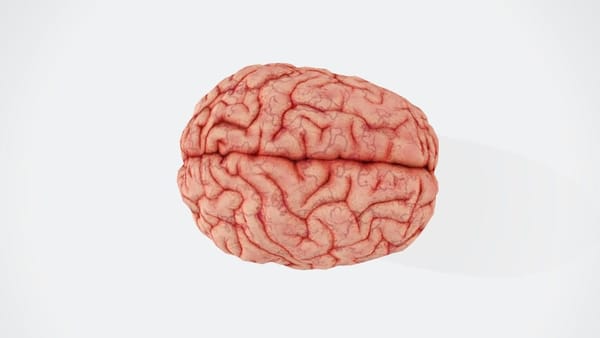
Member discussion